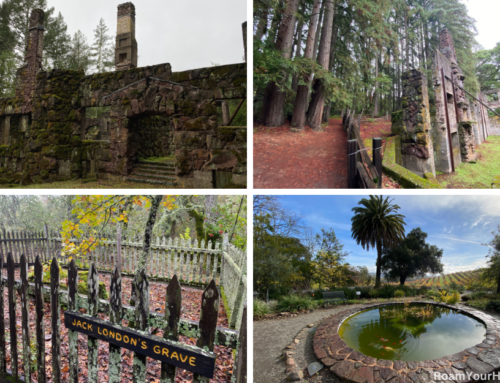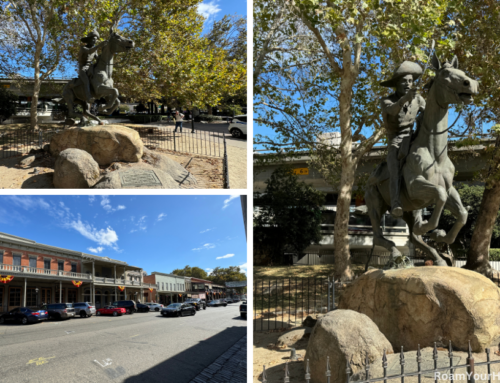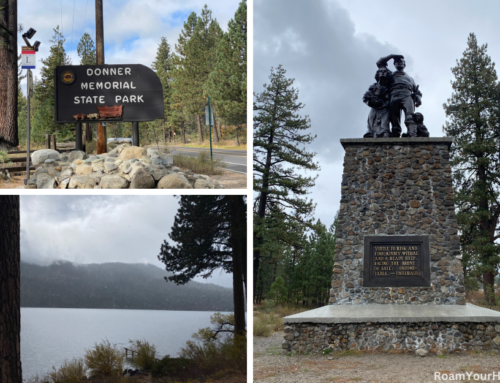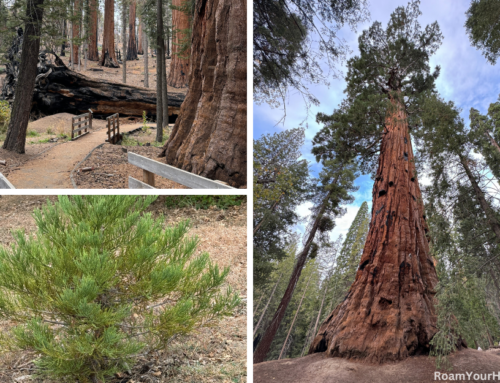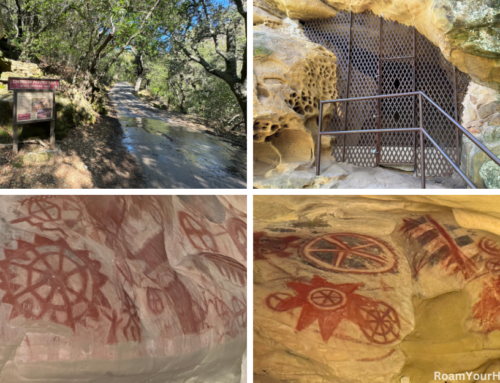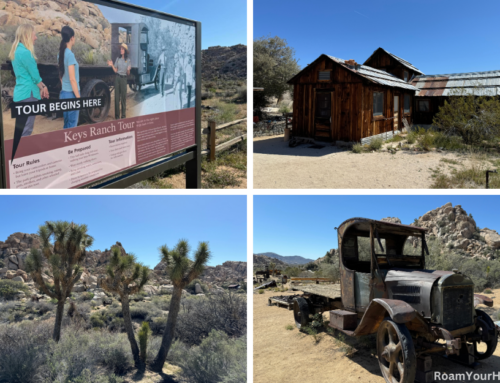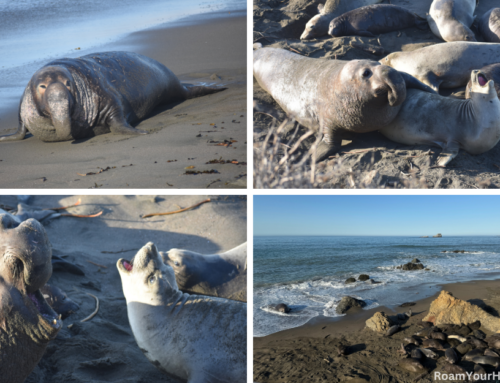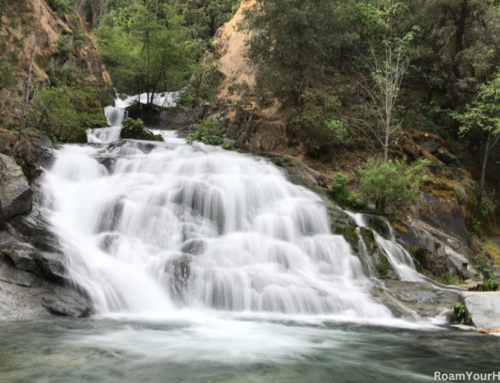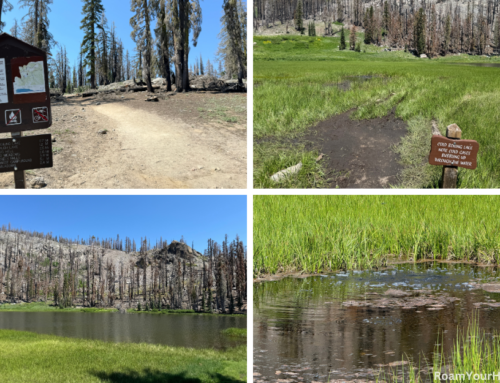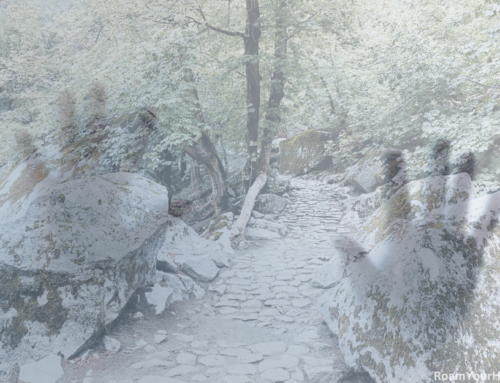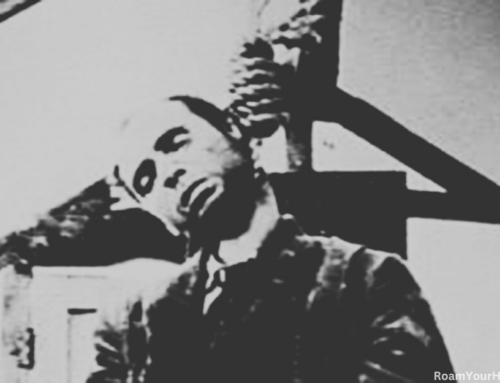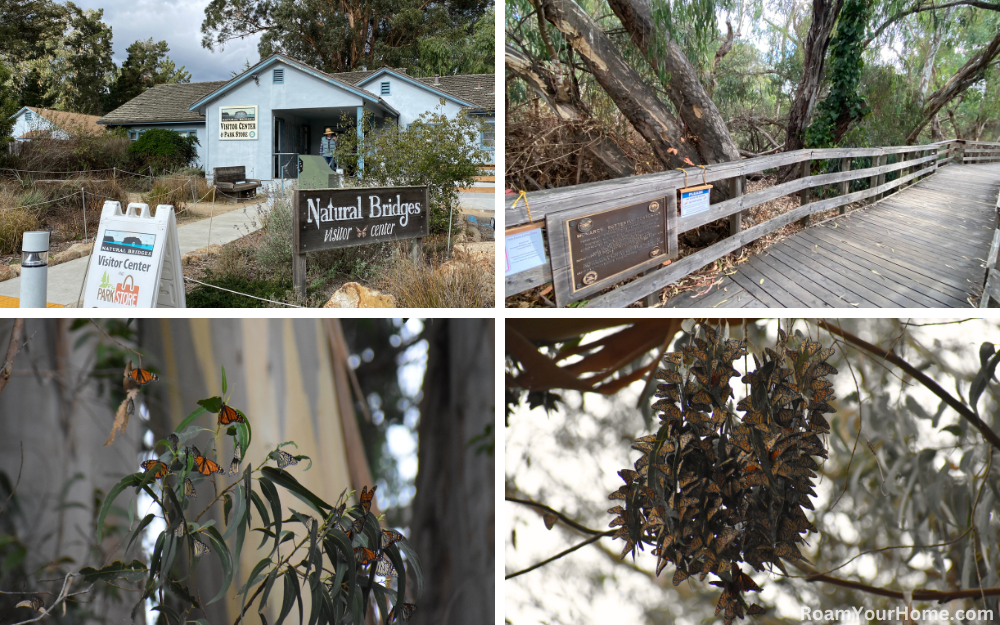
1000s of Monarch Butterflies visit these Santa Cruz State Parks
Santa Cruz, California, has a well-deserved reputation as a laid-back surf town. The seaside scenery is awesome. However, something else is often overlooked by folks flocking to the famous boardwalk or sipping on microbrews: butterflies, particularly thousands of monarch butterflies.
When I visited in late fall, I was definitely excited to hang out and absorb the surf culture. But I was also thrilled to see monarchs who winter there.
Natural Bridges State Beach was first on my list. Thousands of monarchs arrive in the park yearly and form a “city in the trees” from late fall through winter. The park’s forgiving seaside climate and eucalyptus grove give the butterflies a safe place to roost until spring.
The trail through the grove does descend slightly, but it should be okay for most people. It was a chilly late November afternoon when I visited, so most of the thousands of butterflies were clustered together in the tree branches. When it’s below 55 degrees, the monarchs cluster in the trees, interlocking their legs to avoid being dislodged during windy and wet weather. If the temperature falls below 45, monarchs cannot move. With their tan undersides, the dense clusters of monarchs look like clumps of dead leaves from a distance. A few were flying here and there during my visit, but by no means a ton. Once the temperature rises above 55 to about 60 degrees, the thousands of butterflies burst from their clusters, creating a spectacular, colorful display filling the grove.
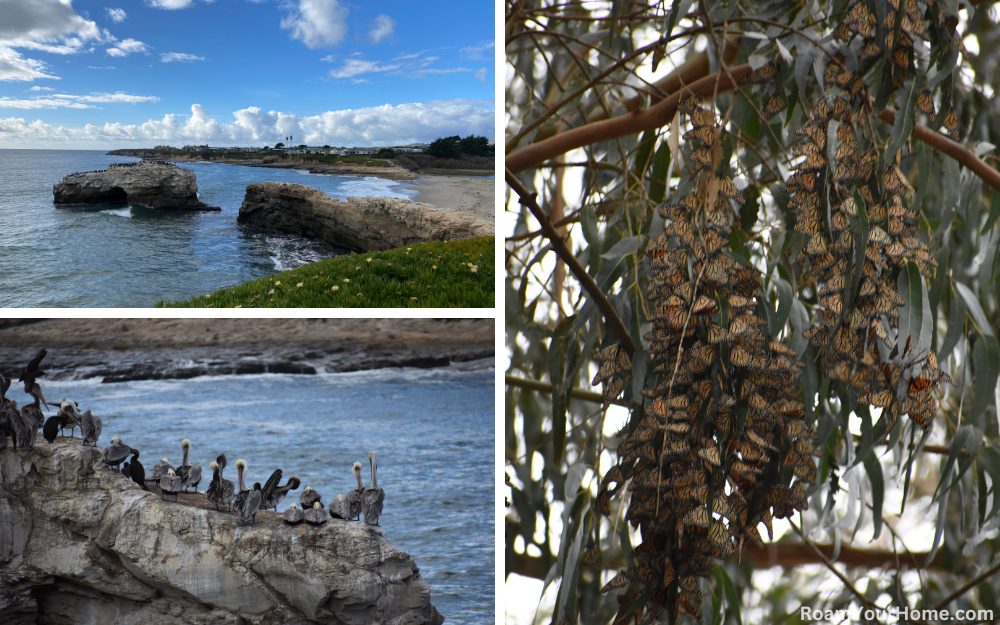
Monarch Roost at Natural Bridge from October through December
Most monarchs are at Natural Bridge from late October through December. According to a park ranger at the visitor center, the best time to visit varies yearly, but it is usually November.
Come January and early February, the Monarchs begin their incredible 1,500-mile migration to the milkweed patches in the Rocky Mountains. The astonishing journey will last five generations, with each generation hatching and traveling further inland. The fifth and final fall generation returns to California, where their great-great-grandparents started from. Monarch butterfly life spans vary greatly, from two weeks to nine months. The butterflies you see at Natural Bridges during the fall and early winter live up to nine months.
I was captivated by this place. It was so special to visit. Adding to the coolness, I saw a red-tailed hawk eating some sort of rodent in a tree high above the trail. I approached a group of people, one of whom had a giant camera lens hooked into a large display monitor. “Come over and take a look” the man said to me. “The butterflies are great, but this hawk is here having a snack.”
I headed down the trail after checking out the hawk and exchanging pleasantries. I soon came to dozens of clusters high in the eucalyptus trees. I was thankful I brought both binoculars and my zoom lens for my camera; the butterflies would have been hard to see without them.
I spent about 45 minutes relaxing and enjoying the scenery. That was quite a while; for those in a hurry, you do not need that much time to hike down and see the butterflies. I went to the Visitor Center after the hike to check it out. One of the nicest park volunteers ever greeted me, who clearly enjoyed the gig. Jen was an encyclopedia of monarch facts. “They lay their eggs only on milkweed, that’s the only host plant,” she exclaimed. “The eggs hatch in three to five days. After hatching, they eat the casing then feed exclusively on milkweed.” She lit up when describing their migration. “Did you know a single monarch can travel thousands of miles in the correct direction … even though they have never made the journey before.” I was on the road after chatting with her for a few more moments.
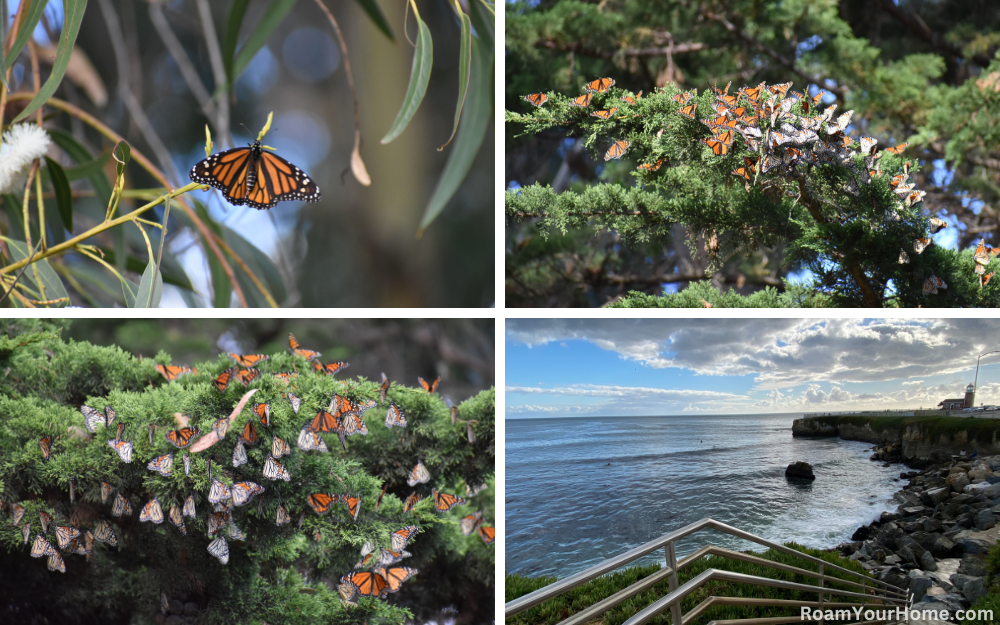
Lighthouse Field State Beach Monarch Butterflies
I headed to Lighthouse Field State Beach, about two miles down the road, on Jen’s recommendation. “There’s a few thousand monarchs in the trees behind the concession stand,” she had told me. To my delight and luck, the sun had popped, and the temperature began to drive.
As I walked back toward the trees, there were far fewer people and hundreds of butterflies fluttering. A couple of signs indicated monarchs migrate here each year as well, but this spot did not seem as well known. This is what I had hoped to experience down the road. I spent the next half hour or so sitting on the grass, watching them fly about, and enjoying a magical time in Santa Cruz.

